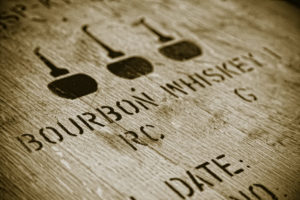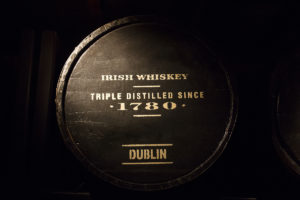Morning News – March 2024 – Whiskey for Saint Patrick’s Day
Although the juice of the vine is usually my main focus, with Saint Patrick’s Day ebbing ever closer, I shift my attention to more “grain-based” liquids. Whisk(e)y enjoys production in many countries across the world and can be identified and marketed under a variety of names, in accordance with local and international labeling laws. These whiskeys vary in mash bill (types of grain used), production processes and aging requirements, which gives them not only a unique style but their own individual personalities.
Bourbon Whiskey
As ethnocentric Americans, when someone mentions whiskey, we almost immediately have a Pavlovian response, envisioning Bourbon. While this iconoclastic American drink is a type of whiskey, there are some strict, an often-misstated rules, that define a Bourbon. One such mistaken inference relates to the name itself. Even though the term Bourbon originates from the same-named county in Kentucky, it is not compulsory for Bourbon whiskey to be produced, aged or spend any time in that great state.
What is Bourbon
 Legally, Bourbon must contain a minimum 51% corn in the mash bill, be produced inside the United States, age in charred new American oak barrels for a minimum of 2 years (but if less then 4 years it must state that on the label), distilled to no more than 80% abv (160 proof), enter the barrel at a maximum of 62.5% abv (125 proof) and bottled at a minimum of 40% abv (80 proof). Any adjustment of color, such as adding spirit caramel, is prohibited.
Legally, Bourbon must contain a minimum 51% corn in the mash bill, be produced inside the United States, age in charred new American oak barrels for a minimum of 2 years (but if less then 4 years it must state that on the label), distilled to no more than 80% abv (160 proof), enter the barrel at a maximum of 62.5% abv (125 proof) and bottled at a minimum of 40% abv (80 proof). Any adjustment of color, such as adding spirit caramel, is prohibited.
What Make Bourbons Unique
With all these rules, one would think that most Bourbon would taste relatively the same but nothing could be further from the truth. As with all types of whiskey, small differences in production processes equate to large variances in flavors and aromas with the finished spirit. Water supply, other grains in the mash bill aside from corn, yeast strain, size and type of still, amount of char in the barrels, location of a barrel in rickhouse, and location of the rickhouse itself all are important in determining the character of any final whiskey.
Whether you prefer the smooth creaminess of a mostly corn recipe, the sweet honied notes of a wheated spirit, the lemon pepper spice of a high rye or cooked cereal notes from a malted barley recipe, a Bourbon that matches your flavor profile is out there waiting. As the variety of flavors and styles are almost endless, one can never grow weary of sampling through this great American whiskey.
Scotch Whisky
If you are more of a traditionalist then we drop the “e” and head to Scotland for some Scotch Whisky. This globally appreciated drink has its earliest documentation from a tax record in the late 15th Century and now contributes over £7 Billion to the UK economy.
What is Scotch Whisky
By law, all Scotch Whisky must be made in Scotland, contain only three ingredients: water, yeast, and cereals, and aged in oak (usually used Bourbon barrels) for a minimum of three years. The distilled strength must be less than 94.8% abv (189.6 proof) and bottled at a minimum of 40% abv (80 proof). As there are five different categories of Scotch, the laws vary depending on what type is being produced and these terms are widely misused by consumers and “experts” alike.
Styles of Scotch Whisky
When discussing Scotch Whisky, most consumers tend to envision the single malt category. These whiskies are produced from malted barley, twice batch distilled in copper pot stills and made entirely in one distillery. Where Blended (Vatted) Malt Scotch is a blend of two or more Single Malts from different distilleries. This practice of exchanging barrels between distilleries to add complexity to their whiskies has been going on for centuries and by no means indicates a lesser quality.
Grain Scotch production includes malted barley along with other grains in the mash bill and although can be distilled in copper pots, it most likely involves a Coffey still (continuous distillation). If made at a single distillery, the whisky is labeled as Single Grain Scotch and if made from a number of distilleries, and vatted, then it becomes Blended Grain Scotch. These tend to be lighter in nature, easier to drink and a great place to begin if you are new to these whiskies.
Coffey still (continuous distillation). If made at a single distillery, the whisky is labeled as Single Grain Scotch and if made from a number of distilleries, and vatted, then it becomes Blended Grain Scotch. These tend to be lighter in nature, easier to drink and a great place to begin if you are new to these whiskies.
The largest market share goes to the final category, know as Blended Scotch. This is simply a blend of one (or more) Single Grain Scotch and one (or more) Single Malt Scotch. Initially this style was created to soften some of the pungency of the Single Malts with the lightness of the Grain whiskies, making them much more approachable. The quality level in this category varies wildly, but you can find some easy drinking whiskies that have some of that Single Malt character at much more wallet-friendly prices.
Regional Differences
The regional differences represent the final variable when looking at Scotch profiles. Highland, Lowland, Speyside, Campbeltown, and Islay are the accepted locations when discussing where distilleries are located. Although there are not any sweeping defining flavor characters for each region, there are some generalizations one can make. The use of peat to flavor the grain can be found in any area, but Islay seems to have the heaviest of the peated Scotch Whiskies. Whereas the Lowland whiskies seem to be the lightest and softest of all the regions. Again, these are simplistic overgeneralizations that one could easily find exceptions.
Irish Whiskey
With it being the celebration of Saint Patrick, one could not ignore the importance of Irish Whiskey to our cultural appreciation. Much to the chagrin of Scotland, The Emerald Isle can claim documented whiskey production almost a century earlier. Though illegally untaxed hooch was probably made by both countries decades prior to any recorded sales.
What is Irish Whiskey
By definition Irish Whiskey must be distilled, aged and bottled in Ireland (or Northern Ireland), distilled from cereal grains and aged in barrel for no less than three years. Like Scotch, there are a few categories defining the varying types of Irish Whiskey.
Styles of Irish Whiskey
Single Malt Irish Whiskey mirrors that of the Scotch definition, being 100% malted barley and come entirely from one distillery. Although twice distilled is compulsory for the Irish category, most take pride in the triple distillation, separating themselves further from the Scottish whiskies. The Single Grain category is also similar to the Scotch with the difference being the Irish Single Grain Whiskies are almost always corn dominant, rather than barley and gain their signature lightness from the use of a column still.
 The “unique to Ireland” category of Single Pot Still is somewhat misleading but with an interesting history. These whiskies are copper pot distilled from a single distillery but not from a single pot. Distilled from a combination of malted and unmalted barley (minimum of 30% each) and an allowance of 5% other grains, these came about as a means to avoid British taxes. The whiskey makers were taxed through steep fees assessed on the malted grains that went into their production. By incorporating a percentage of unmalted barley in their mash bills, they were able to avoid a large portion of the tax. The history alone was enough for me to tip my hat and buy a bottle.
The “unique to Ireland” category of Single Pot Still is somewhat misleading but with an interesting history. These whiskies are copper pot distilled from a single distillery but not from a single pot. Distilled from a combination of malted and unmalted barley (minimum of 30% each) and an allowance of 5% other grains, these came about as a means to avoid British taxes. The whiskey makers were taxed through steep fees assessed on the malted grains that went into their production. By incorporating a percentage of unmalted barley in their mash bills, they were able to avoid a large portion of the tax. The history alone was enough for me to tip my hat and buy a bottle.
The final category of Irish Blended Whiskey can represent a plethora of potential styles. This type allows two or more of the aforementioned styles to be blended together from any number of different distilleries. Most involve a significant amount of Grain whiskies that give this style a very light, smooth and appealing drinkability.
So, as you begin to make your selections for Saint Patrick’s Day (weekend), keep in mind the amazing number of choices you have to fulfill that whisk(e)y need. Personally, to diversify my palate, I will be drinking Bourbon on Friday, Scotch on Saturday, and Irish Whiskey on the 17th of March. If that’s not a verse in a song, it should be. In honor of Saint Patrick’s Day, “May your pockets be heavy and you heart be light”. Lá Fhéile Pádraig Sona Daoibh!
Suggested Whiskies
Heaven Hill Bottled in Bond 7-year ($50)
This 100-proof Kentucky straight Bourbon has a mash bill of 78% Corn, 12% Malted Barley, 10% Rye. Nose of sweet spice (vanilla), toasted sugar (caramel), leather, tobacco, oak dust, cola nut, and a honied element. The palate is warm and generous with rye elements emerging first (lemon-pepper spice), followed by butterscotch, leather, and tobacco. Some cinnamon arrives on the prolonged, palate drying, dusty oak finish.
The Glenlivet 15-year single malt French Oak Reserve ($90)
This Speyside malt was aged in Limousin oak from the Dordogne region of France. The spirit has a malty cooked cereal nose with concentrated dried fruits (raisin, apple, banana), and cinnamon. The palate has barley spiced with oak, clove, nutmeg, dried fruit, citrus peel, toasted nut and a sweet gently warming finish.
Redbreast 12-year Single Pot Still ($65)
This whiskey has a mash bill of malted and unmalted barley, the definition of the Single Pot Still category. The nose has wonderful aromas of sweet spice, toffee, caramel, cherry, earthiness, sweet scone, sherry, and green peppercorn. The palate has flavors of toffee, red fruit, leather, pepper, pastry, charred wood, and a pleasant nuttiness. There is an obvious textured oiliness on the palate that I found very interesting.




